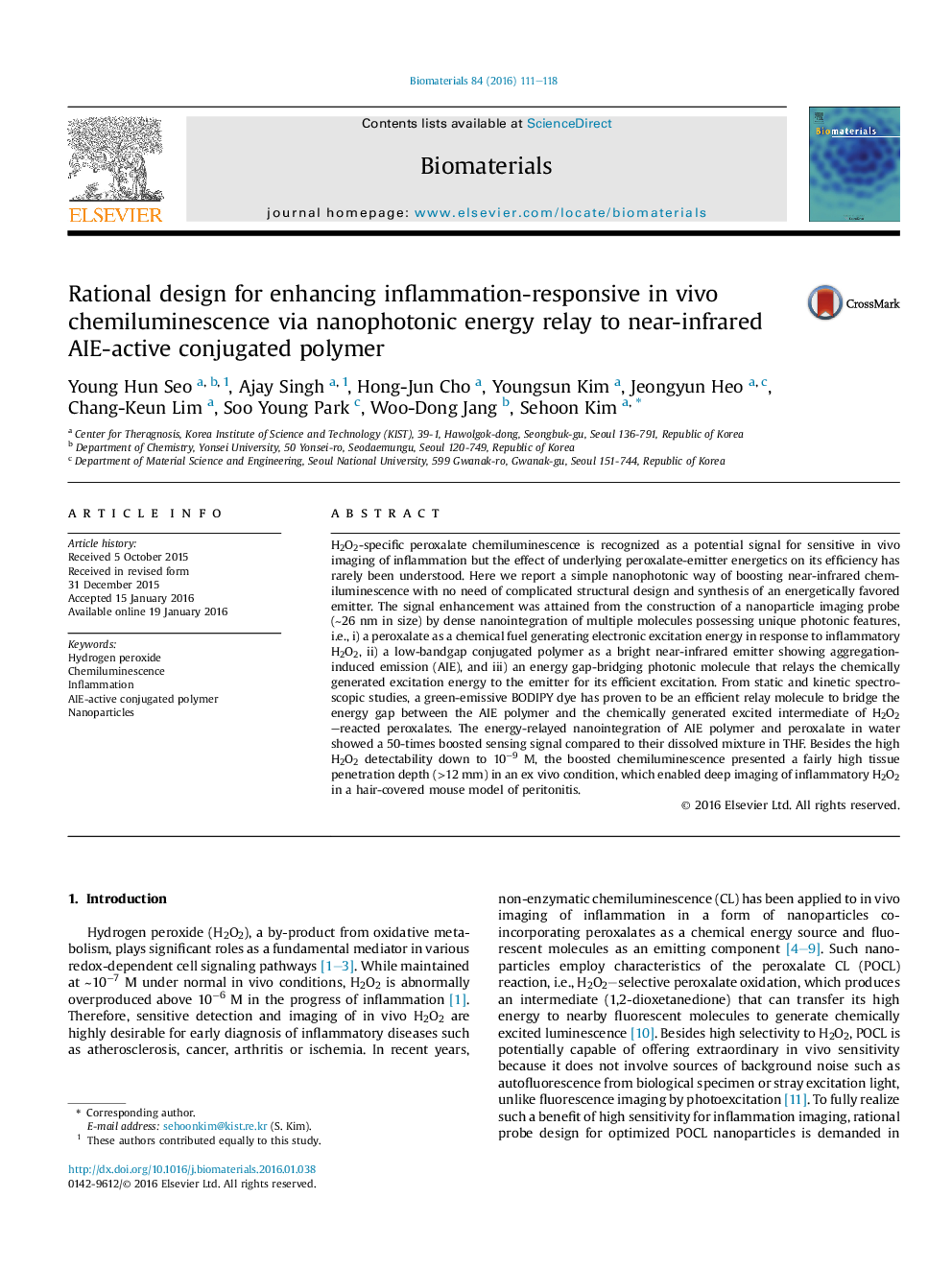| Article ID | Journal | Published Year | Pages | File Type |
|---|---|---|---|---|
| 6485101 | Biomaterials | 2016 | 8 Pages |
Abstract
H2O2-specific peroxalate chemiluminescence is recognized as a potential signal for sensitive in vivo imaging of inflammation but the effect of underlying peroxalate-emitter energetics on its efficiency has rarely been understood. Here we report a simple nanophotonic way of boosting near-infrared chemiluminescence with no need of complicated structural design and synthesis of an energetically favored emitter. The signal enhancement was attained from the construction of a nanoparticle imaging probe (â¼26 nm in size) by dense nanointegration of multiple molecules possessing unique photonic features, i.e., i) a peroxalate as a chemical fuel generating electronic excitation energy in response to inflammatory H2O2, ii) a low-bandgap conjugated polymer as a bright near-infrared emitter showing aggregation-induced emission (AIE), and iii) an energy gap-bridging photonic molecule that relays the chemically generated excitation energy to the emitter for its efficient excitation. From static and kinetic spectroscopic studies, a green-emissive BODIPY dye has proven to be an efficient relay molecule to bridge the energy gap between the AIE polymer and the chemically generated excited intermediate of H2O2-reacted peroxalates. The energy-relayed nanointegration of AIE polymer and peroxalate in water showed a 50-times boosted sensing signal compared to their dissolved mixture in THF. Besides the high H2O2 detectability down to 10â9 M, the boosted chemiluminescence presented a fairly high tissue penetration depth (>12 mm) in an ex vivo condition, which enabled deep imaging of inflammatory H2O2 in a hair-covered mouse model of peritonitis.
Related Topics
Physical Sciences and Engineering
Chemical Engineering
Bioengineering
Authors
Young Hun Seo, Ajay Singh, Hong-Jun Cho, Youngsun Kim, Jeongyun Heo, Chang-Keun Lim, Soo Young Park, Woo-Dong Jang, Sehoon Kim,
